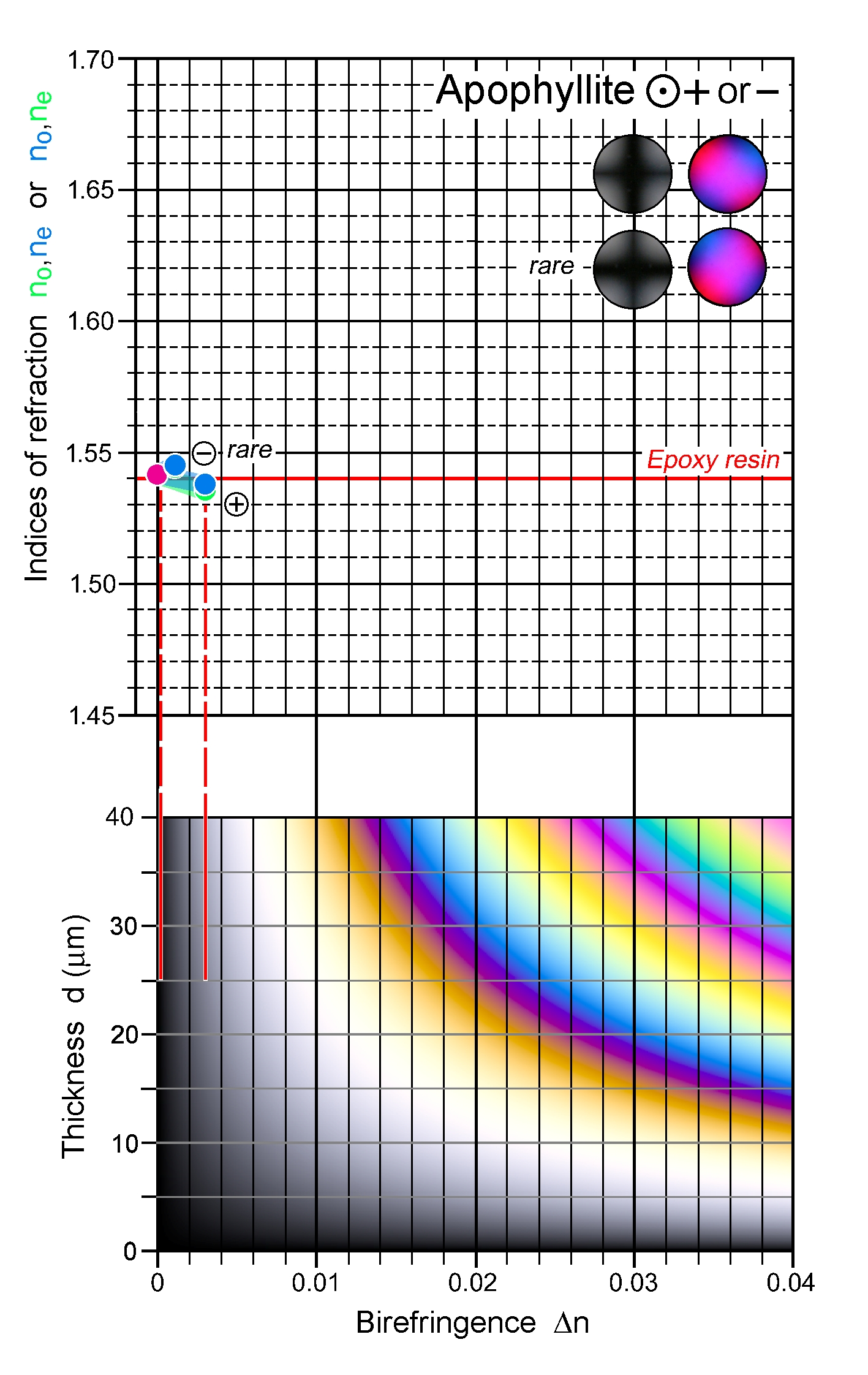|
| Formula | (K,Na)Ca4Si8O20(F,OH) • 8H2O |
| | Optic class & sign | Uniaxial positive or negative |
| | Relief | Low |
| | Refractive indices | no = 1.530 -1.545
|
|
ne = 1.533 -1.544
|
|
| n increases with increasing substitution of OH for F |
| | Birefringence (max.) | 0.000 - 0.003 |
| | | Anomalous interference colours |
| | Sign of elongation | Length-fast, l (-) in sections ∥ c if crystals are platy; length-slow, l (+) if crystals are elongate in c; reverse relationships apply to optically negative varieties |
| | Interference figure | Low first-order colours in interference figures, broad isogyre cross, no isochromes; anomalous 2V up to 60° |
| | Colour / pleochroism | Colourless |
| | Zoning | |
|
|
| Form | Habit | Granular or platy |
| | | Surface | Euhedral to anhedral |
| | Cleavage | {001} |
| | Twinning | {111}, uncommon |
| | Extinction | Straight to {001} and prism faces in sections parallel to c |
|
|
| Reaction textures | |
| | Alteration / decomposition | Clay minerals, chert, opal, calcite; apophyllite can be an alteration product of wollastonite |
|
|
| Occurence | Ign | |
| | | Met | Marble, calcsilicate rocks; natroapophyllite in skarns |
| | | Sed | |
| | | Hyd | Amygdales and veins in basaltic volcanics; also in cavities in granites and aureoles of granititic intrusions; veins in nepheline syenite |
| | | Other | |
|
|
| Distinctive properties | Perfect basal cleavage, low relief, very low Δn |
| | Additional comments | Most apophyllite is F-rich and optically positive; changes from positive to negative may occur within single grains. Complete solid solution exists between fluorapophyllite and hydroxyapophyllite, and the few data sets indicate that the refractive indices increase from the most F-rich apophyllite to higher values for hydroxyapophyllite, while delta-n decreases to 0 and then increases again to 0.001, as the optic sign changes from positive to negative. Natroapophyllite is orthorhombic, biaxial positive, with Δn = 0.008. |
|
|

 Images
Images 


 Images
Images 
